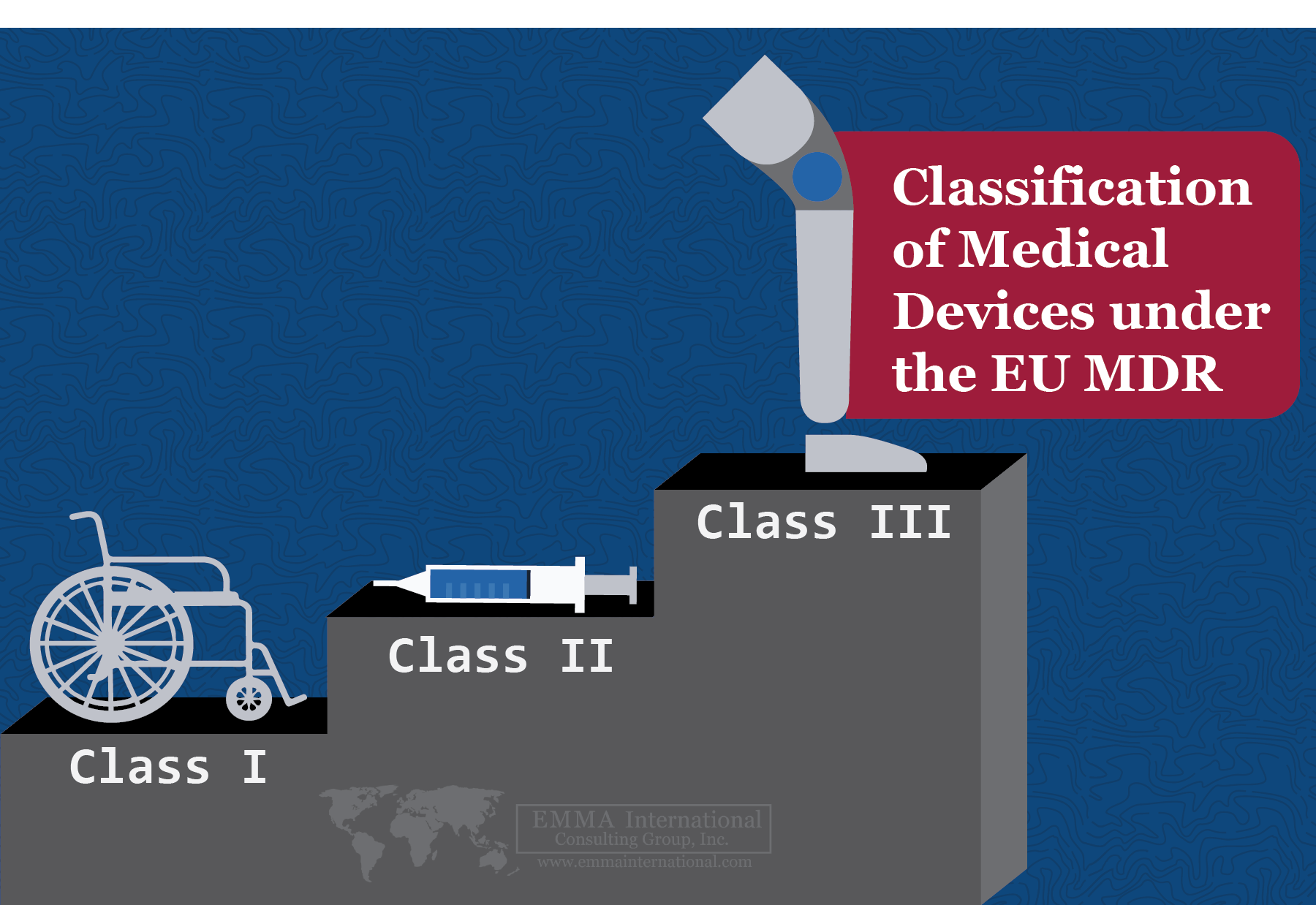One of the major changes with the EU MDR that medical device manufacturers will feel as they transition to comply with the new regulation is the change in requirements for device classification. As medical device classifications change so do the requirements for manufacturers. A change in device classification will also impact how and when medical device manufacturers interact with their Notified Body. All of this is critical as it can affect a device’s ability to be CE marked, which is required in order to legally market your device in Europe.
Both the current Medical Device Directives (MDD) and the MDR classify medical devices into one of the following classes:
- Class I (low risk)
- Class IIa (medium risk)
- Class IIb (medium/high risk)
- Class III (high risk)
Much like the FDA, the EU regulations utilize a risk-based approach to classifying medical devices.[1] The higher risk your medical device is, the more rules and regulations you must comply with. Under the MDD there are 18 rules for classification, found in Annex IX of the directive. In the upcoming MDR, there are 22 classification rules, partly due to a broader scope. The MDR will apply to certain products not regulated through the MDD, such as devices without an intended medical purpose like non-corrective (decorative) contact lenses.2 The MDR will also specially regulate devices incorporating nanomaterials and devices manufactured with non-viable human tissue, which are currently exempted from the MDD.
With the new regulation also comes classification changes relevant to certain devices. All active implantable devices and their accessories will be considered Class III. Any substance-based device intended to be used via a body orifice or applied on the skin may not be a class I, so any substance-based devices currently in Class I will be up-classified with the new regulation. Any manufacturer with a device that will be up classified with the MDR must comply with stricter requirements and will likely have to engage their Notified Body more.
Additionally, the medical app industry will also be affected by reclassification with the MDR. Most of the medical software in Europe currently falls under Class I, but the MDR will have tighter requirements for medical device software.3 Medical device software developers will now have to conform to stricter rules in order to continue to market their software in the EU.
EMMA International can help you transition to the upcoming EU MDR, contact us at info@emmainternational.com or 248-987-4497 to see how we can help!
1Burnett, Mowat (April 2012) How Are Medical Devices Regulated in the European Union retrieved on 12/03/2019 from: https://www.ncbi.nlm.nih.gov/pmc/articles/PMC3326593/
2Official Journal of the European Union (May 2017) Regulation (EU) on Medical Devices retrieved on 12/03/2019 from: https://eur-lex.europa.eu/legal-content/EN/TXT/PDF/?uri=CELEX:32017R0745
3Fillmore (March 2019) Is your software a medical device? Retrieved on 12/04/2019 from: https://www.raps.org/news-and-articles/news-articles/2019/3/is-your-software-a-medical-device






